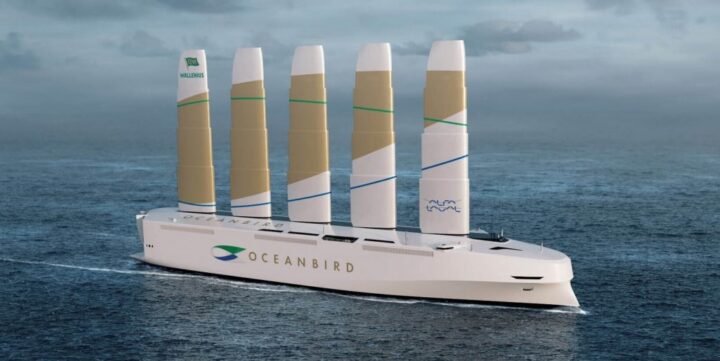
Oceanbird: Will cruises soon take place on this gigantic sailing ship?
Wind power instead of heavy oil: The “Oceanbird” concept is intended to make shipping more environmentally friendly and herald the end of fossil fuels. In the future, this could also revolutionize cruising.
Shipping is still one of the biggest construction sites in the fight against climate change. More than 90 percent of world trade is handled by sea, according to the website of the Federal Ministry for Economic Affairs and Climate. The damage to this maritime economy is immense: a disrupted marine ecosystem and more CO₂ emissions every year than all air traffic. Cruise ships are also repeatedly criticized for their climate and ecological balance. With the “Oceanbird” concept, cruise ships and cargo ships should soon be able to sail largely emission-free. Because instead of motors, telescopic sails up to 80 meters high are used.
Sails instead of heavy oil
The “Oceanbird” concept wants to set an example and set sail in the fight against the climate catastrophe. To this end, the Swedish ship design company Wallenius Marine, the Swedish research institute SSPA and the Royal Institute of Technology in Stockholm are cooperating.
So-called “tall sailors” were the kings of the seas for centuries, until steamships took over the throne in the mid-19th century. But even today, wind power could be an option and an emission-free drive. However, there are differences to the “old” sailing ships.
Instead of fabric sails, “Oceanbird” uses 80-meter-high, adjustable and retractable sails made of a mixture of metal and composite material. The telescopic design of the sails, which can be retracted up to 60 meters, is necessary in order to pass under bridges or to reduce the attack surface in a storm. In emergencies and when maneuvering in port, an auxiliary drive should take over. The possible fuels for this are currently being investigated – but the criterion of reliability is the top priority here, according to the company.
200 meter long ship
The first drafts are based on a 200 meter long and 40 meter wide car freighter. The cargo ship could carry 7,000 vehicles across the Atlantic in 12 days. With the wind propulsion it would reach a speed of 10 to 12 knots. Compared to a conventional freighter, pollutant emissions are to be reduced by around 90 percent.
In addition to air pollution, noise pollution in the water is also reduced. A motor-driven ship makes its way through the seas with heavy machinery. The resulting noises do not occur with the “Oceanbird” concept. Whales and other marine mammals, who rely on their hearing to navigate and forage, benefit most from this.
First ship planned for 2025
The Swedish shipping company Wallenius Wilhelmsen wants to put the “Orcelle Wind” into service as early as 2025, the first cargo ship based on the “Oceanbird” concept. It is not yet known when the “Oceanbird” concept will be used in the conventional cruise industry. However, it is clear that there would be a green streak on the horizon for the industry, which has repeatedly come under criticism. Even if the sailing ship were significantly slower than a steam cruiser.
Categories: General
